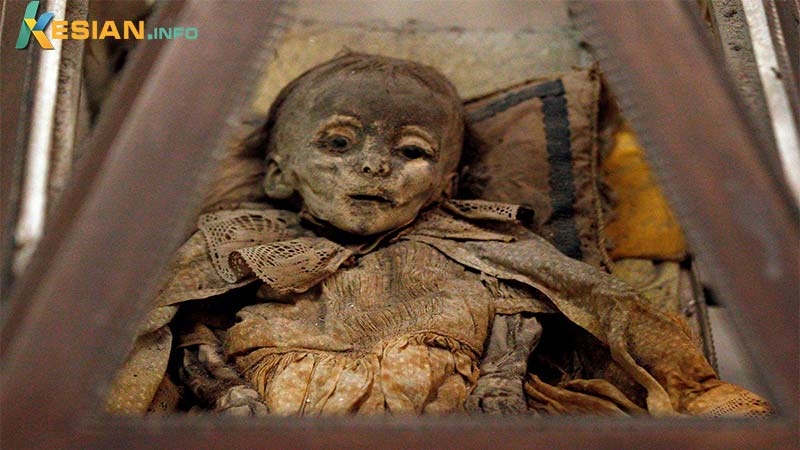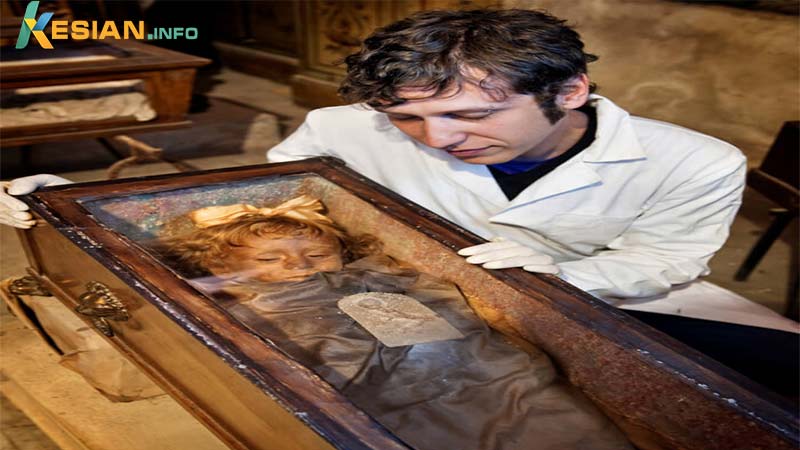One of the experts claimed, “I want to make sure their stories and presence on this Earth is not forgotten.” Not much is known about over 160 children entombed in Sicily’s world-famous Capuchin Catacombs in Palermo, and the reasons for their slight and often mummified remains being put there at the beginning.
Currently, a team of experts is planning to uncover some mysteries surrounding the mummies. They hope to utilize X-ray analysis to know more about the children’s lifestyles and ages, as per Kirsty Squires, head of the study, principal investigator and associate professor of bioarcheology at Staffordshire University in England.

Squires said that the project, being the initial to completely concentrate on children dying between 1787 and 1880, will be searching for proof of developmental defects, trauma and diseases.
“We are looking for cause of death, health conditions at the time of death, and development,” she added. “No one has looked at the mummies to better understand these attributes before. ”
There are more than 1,284 embalmed and partially-skeletonized bodies, some of which are perfectly preserved, presented inside the Capuchin Catacombs of Palermo, the biggest gatherings of mummified skeletons in Europe. The bodies are part of Sicily’s heritage and are exhibited for general public and tourists.
However, the question remains on the method the children were interred in the place, with death documents only holding restricted data. Experts plan to zero focus on 41 bodies held in the so-called children’s room of the catacombs. The catacombs hold more than 163 remains of children, but Squires stated that experts only concentrate on those within reach.
X-ray scan will be conducted on each mummy head to toe to inspect their bones, assisting in identification of their age, together with dental and any soft tissue remains in the pelvic area to identify the gender.
Researchers will then contradict the results with the dead’s placement within the children’s room, together with their dress and funerary relics to know more about their identity in life and death.
Squires also claimed that the children’s bodies would remain intact under the impact of the X-rays.

“Imaging methods are non-invasive, and as the mummies cannot be moved out of the crypt, this approach is the only feasible,” Dario Piombino-Mascali, the project co-investigator and a biological anthropologist at Lithuania’s Vilnius University said. Meanwhile, experts are scheduling the fieldwork to start next week.
In fact, the embalmed bodies and skeletal remnants lying inside the Capuchin Catacombs’ many niches, crevices and corridors are among the most significant collections of mummies all around the globe. The cemetery was opened to the public after having been initially used for monks of the Capuchin order.
Currently, the site has grown into a landmark and a famous tourist attraction. Previously, researchers inspected Rosalia Lombardo, one of the child mummies buried in the catacombs, who died of pneumonia at the age of two in 1920.
Her perfectly preserved and nearly lifelike face, eyelashes, hair and burial attire earned her the name “world’s most beautiful mummy.” Lombardo was among the last ones to be entombed there.

For Piombino-Mascali, it’s important that the stories of the children of the Capuchin Catacombs are told. “I was a lucky child, but I know that some children were not so lucky and died prematurely,” he said. “I want to make sure their stories and presence on this Earth is not forgotten.”







